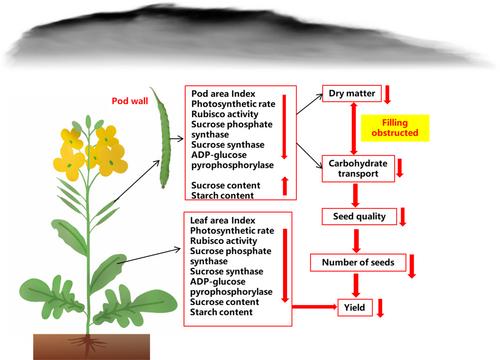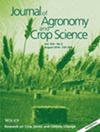In many parts of the world, solar radiation has decreased during the past 50 years due to industrialisation-induced elevations in air aerosols which has negatively impacted crop productivity. Climate change threatens rapeseed (Brassica napus L.) production due to shade stress caused by reduced light radiation. However, studies on how shade affects photosynthetic mechanisms in rapeseed (leaves and pod wall) are not well documented. Understanding the mechanisms of shade on yield formation in rapeseed is important for breeding shade-tolerant rapeseed varieties and optimising agricultural management practices in low-light areas. Therefore, this study assesses the impacts of ‘global dimming’ simulated by shading at a specific period on rapeseed's photosynthetic behaviour, yield and seed quality. A two-factor split-plot design was arranged with three shading treatments (CK, FS and PS) and two hybrid genotypes (Chuannong and Zhongyouza) of rapeseed. We observed that shading at the flowering stage (FS) significantly inhibited the leaf area index, chlorophyll content, photosynthetic efficiency and enzymatic activities of both genotypes. Besides that, shading at pod development stage (PS) substantially declined the pod photosynthetic characteristics and transportation of carbohydrates towards economic organ (seeds) which directly decreased the yield of rapeseed. We found that PS treatment remarkably declined the oil content of both genotypes. According to the results, the photosynthetic capacity of rapeseed pod wall had a greater impact on yield and seed quality than leaves. Therefore, improving the photosynthetic capacity and material transport efficiency of the pod wall is a potential measure to increase the yield of rapeseed under shade stress. This study provides a new insight into the effects of shade on rapeseed production and provides a valuable reference for rapeseed breeding techniques to develop high-yielding genotypes by enhancing the photosynthetic efficiency of rapeseed pod wall in low-light conditions.



